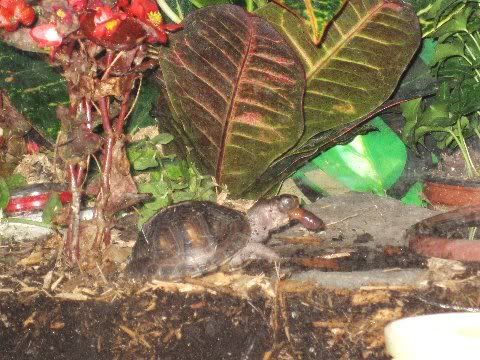Quote from NERD:
"As I watched my first acqired redfoot hatchlings in 1998 begin to grow 'bumpy' I was determined to not allow that to happen with my own hatchlings................ so I did virtually everything opposite the 90's caresheets(?) advocated. This was also the result of speaking with Richard Fife in '04 - remember Richard?.. the sulcata/leopard breeder. And Rico [ TN Aquarium ] who breeds Hermanns/Egytians ----- and not to forget the MASTER breeder of them all - Bill Zovickian - radiated, platynota, Sri ( elegans )..etc., etc. And of course the exotic snake handler turned redfoot breeder Carl? I almost forgot the acquintances from Venezuela and Brazil that added to the understanding of the 'carbonaria species!"
I'm a what? "Exotic snake handler turned redfoot breeder"?
NERD you never cease to be highly entertaining. Incomprehensible of course, but entertaining always.
"As I watched my first acqired redfoot hatchlings in 1998 begin to grow 'bumpy' I was determined to not allow that to happen with my own hatchlings................ so I did virtually everything opposite the 90's caresheets(?) advocated. This was also the result of speaking with Richard Fife in '04 - remember Richard?.. the sulcata/leopard breeder. And Rico [ TN Aquarium ] who breeds Hermanns/Egytians ----- and not to forget the MASTER breeder of them all - Bill Zovickian - radiated, platynota, Sri ( elegans )..etc., etc. And of course the exotic snake handler turned redfoot breeder Carl? I almost forgot the acquintances from Venezuela and Brazil that added to the understanding of the 'carbonaria species!"
I'm a what? "Exotic snake handler turned redfoot breeder"?
NERD you never cease to be highly entertaining. Incomprehensible of course, but entertaining always.




